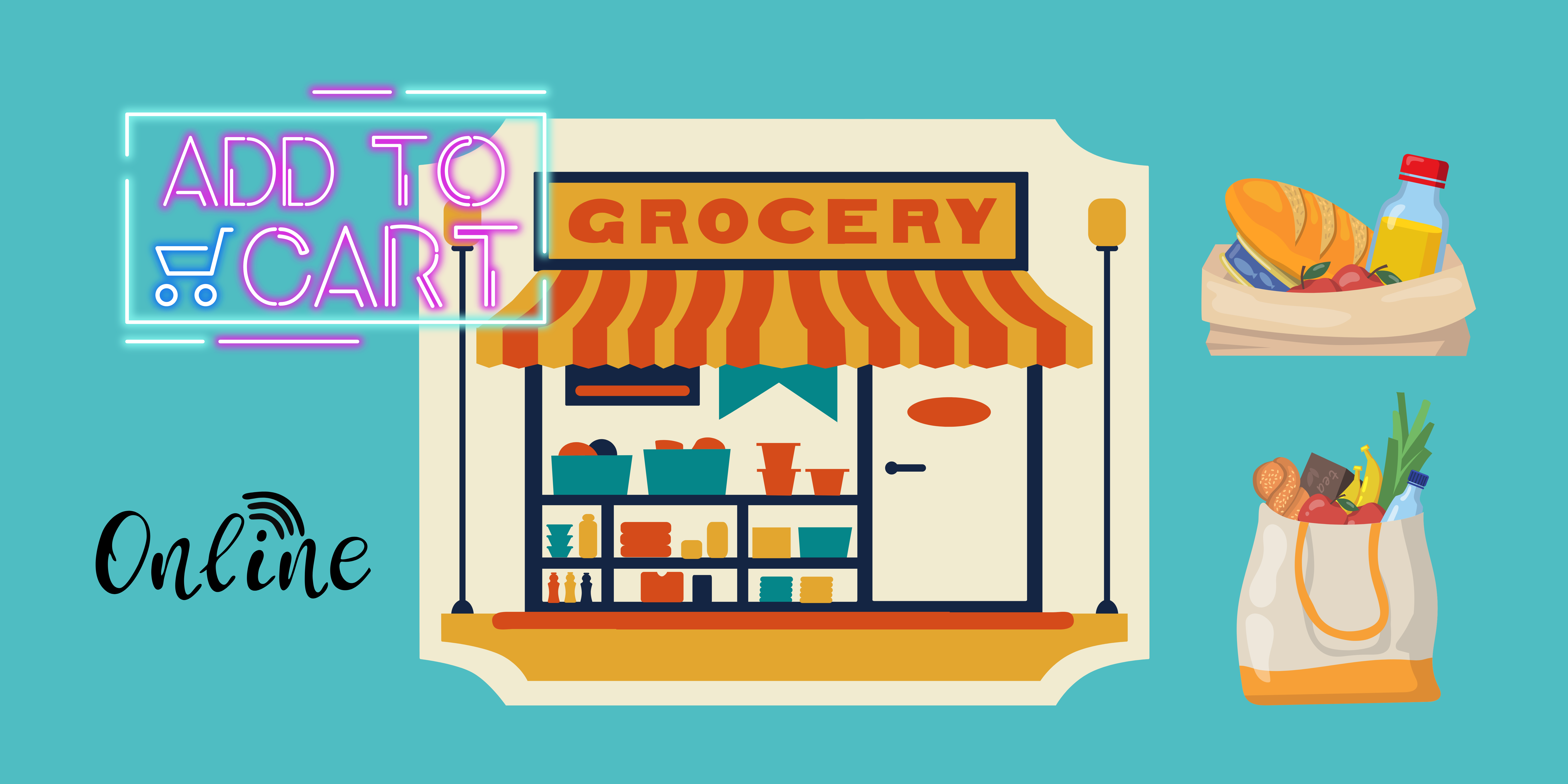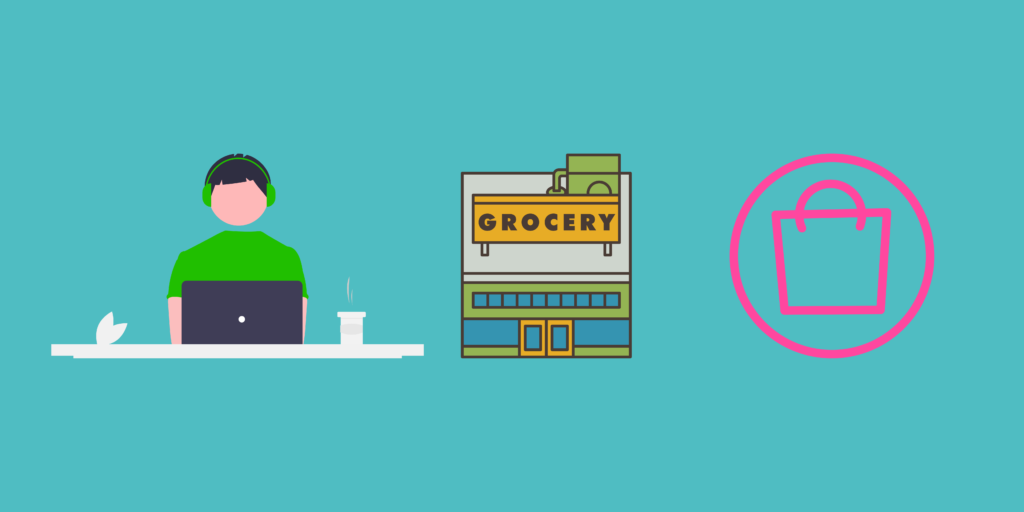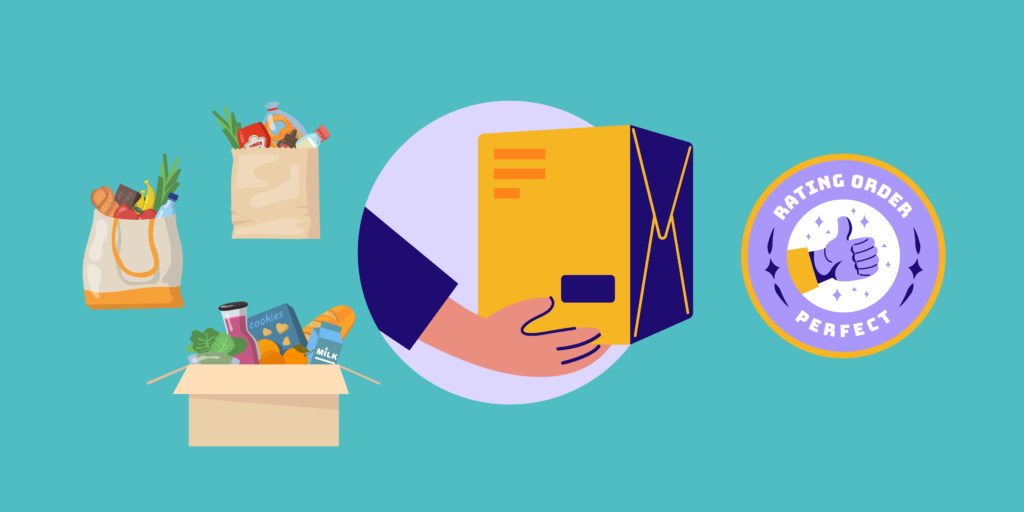Have you ever found yourself too busy to go grocery shopping? Or maybe you just don’t enjoy the hassle of going to the store and waiting in long lines. Well, you’re not alone.
The demand for online grocery shopping has been on a steady rise, especially with the convenience it offers. With Amazon Fresh delivery and Amazon Grocery online, customers can now easily purchase their groceries from the comfort of their own homes. No more battling traffic or parking woes, just sit back and relax while your groceries are delivered straight to your doorstep.
This is why many people are making the switch to online grocery shopping, and it’s only going to continue growing as more individuals discover the convenience it provides.
What is Amazon Fresh?
The growing demand for online grocery shopping has led to the emergence of new players in the market. Amazon, one of the leading e-commerce giants, has stepped into this game with its services called Amazon Fresh and Amazon Pantry.
In fact, according to a recent survey, 52% of US households are expected to buy groceries online by 2024.
So, what exactly is Amazon Fresh? It’s an on-demand grocery delivery service that offers customers a wide range of fresh produce, dairy products, meats, and pantry staples. Here are some key features of this service that make it stand out from the rest:
- Customers can order groceries anytime during the day and get them delivered within hours.
- Customers can choose a convenient time slot for their delivery based on their schedule.
- With over 500,000 items available for purchase, customers have plenty of choices when it comes to selecting their preferred brands and products.
- Prime members get free shipping on all orders above $35.
What is Amazon Pantry?
Amazon Pantry is a popular service offered by Amazon that allows customers to buy groceries and household essentials in bulk. It’s an affordable and convenient way to stock up on everyday items without having to leave your home.
With Amazon Pantry, you can choose from a wide selection of products, including snacks, beverages, cleaning supplies, personal care items, and more. One of the key features of Amazon Pantry is its low prices. Customers can save money by buying in bulk, with discounts offered on many items. Plus, Prime members can enjoy free delivery on orders over $35.
Key Differences Between Amazon Fresh and Amazon Pantry
Now that we have a general understanding of Amazon Fresh and Amazon Pantry, it’s important to note the key differences between the two services.
First and foremost, Amazon Fresh is a grocery delivery service that offers fresh produce, meat, dairy, and other perishable items. On the other hand, Amazon Pantry is an online grocery store where customers can purchase non-perishable items in bulk.
Another key difference between the two services is the method of delivery. With Amazon Fresh delivery, customers can receive their groceries within hours of placing an order. In contrast, Amazon Pantry orders typically take 1-4 business days to arrive. Additionally, Amazon Fresh delivery requires a membership fee while Amazon Pantry does not.
To further break down the differences between these two services, let’s take a look at these:
Differences in Product Offerings
- Amazon Fresh: focuses on perishable items like fresh produce and meats
- Amazon Pantry: focuses on non-perishables in bulk quantities
Differences in Delivery Method
- Amazon Fresh: offers same-day or next-day delivery for perishable items
- Amazon Pantry: typically takes 1-4 business days for delivery
Getting Started with Selling Grocery Items on Amazon
Eligibility Requirements for Selling Grocery Items on Amazon
To start with, sellers must meet specific criteria to offer their products on Amazon Fresh Delivery.
These requirements include having a Professional Seller account, meeting Amazon’s performance metrics standards, and being able to deliver perishable items within two days of receiving an order. Additionally, sellers must have a valid business license and comply with all food safety regulations set by the FDA and USDA.
On the other hand, if you’re looking to list non-perishable pantry items on Amazon Grocery Shopping, you’ll need to meet similar guidelines along with proper packaging and labeling requirements.
How to Become a Seller on Amazon Fresh and Amazon Pantry
To start selling your grocery items on Amazon Fresh and Amazon Pantry, first, you need to create an account on Amazon Seller Central. Once registered, you can apply for approval to sell in the Grocery & Gourmet Food category.
After getting approved, you can then enroll in the Amazon Fresh or Pantry program. Keep in mind that there are specific requirements for each program, such as product packaging and shipping rules. It’s crucial to comply with these guidelines to ensure a smooth transaction process with customers and avoid any penalties from Amazon.
Listing and Categorizing Grocery Products
Now that you have your grocery items ready, it’s time to list and categorize them on Amazon. This is an important step in making sure your products are easily discoverable by customers who use the Amazon Fresh delivery service or browse through the Amazon Fresh app.
To start, you will need to choose the correct category for each product. For example, if you’re selling cereal, it should be listed under the ‘Cereal & Breakfast Foods’ category.
Take note of the required attributes for each category and provide accurate and complete information for each item. This will help customers filter their search results and find exactly what they’re looking for.
It’s also important to optimize your listings with relevant keywords in the title and description. This will increase visibility and improve your chances of getting found by potential customers.
Be descriptive but concise, highlighting any unique features or benefits of your products.
Optimizing Product Listings for Grocery Items
Writing Compelling Product Titles and Descriptions
With just a few simple tips, you can create copy that grabs attention, sparks interest, and convinces customers to click ‘Add to Cart.’
Firstly, let’s talk about the power of hyperbole. Using exaggerated language is a great way to create vivid imagery in the minds of your audience. For example, instead of simply describing your organic apples as ‘fresh,’ try using words like ‘crisp,’ ‘juicy,’ or ‘bursting with flavor.’ This not only makes your product more enticing but also sets it apart from other similar items on Amazon Fresh delivery or Amazon Fresh market.
Here are four additional tips for writing effective product titles and descriptions:
1. Keep it concise.
Don’t use unnecessarily long titles or descriptions.
2. Use keywords.
Incorporate relevant keywords so that your products appear in search results.
3. Highlight unique features.
Emphasize what sets your product apart from competitors.
4. Be specific
Give accurate information about size, weight, quantity, etc.
Providing High-Quality Product Images
When it comes to selling grocery items on Amazon, providing high-quality product images is crucial. Customers rely heavily on visuals to make purchasing decisions, especially when it comes to food products.
With Amazon Fresh Delivery and Amazon Fresh Store, customers have access to a wide variety of grocery items at their fingertips. However, if the product images are not up to par, they may choose to purchase from another seller.
To ensure that your grocery items stand out among the competition on Amazon Fresh and Pantry, take the time to capture clear and visually appealing product images. Use natural lighting and a clean background to showcase your items in the best possible way.
Additionally, consider including multiple angles of each item and highlighting any unique features or packaging.
By taking the extra steps to provide high-quality product images, you can increase your chances of making sales on Amazon Fresh Delivery and Amazon Fresh Store. Remember that customers are looking for not only quality products but also a seamless shopping experience.
By providing clear visuals of your grocery items, you can help make that happen without ever leaving the comfort of your own home.
Highlighting the Key Product Features and Nutritional Information
Imagine walking into a supermarket and seeing aisles upon aisles of products. With so much to choose from, it can be overwhelming to decide what to buy. That’s why sellers on Amazon Fresh Delivery and Amazon Fresh Supermarket need to highlight key product features and nutritional information.
One effective way to do this is by using bullet points or bold text to draw the customer’s attention to the most important aspects of the product. For example, if you’re selling a gluten-free granola bar, make sure to highlight that fact prominently on the packaging or in the product description.
Additionally, including nutritional information such as calorie count and sugar content can help customers make informed decisions about what they’re putting in their bodies.
By providing this valuable information, sellers on Amazon Fresh Delivery and Amazon Fresh Supermarket not only help customers make smarter shopping choices but also build trust with their audience. When shoppers feel confident in their purchases, they’re more likely to continue buying from that seller in the future.
So don’t hesitate to showcase your products’ key features and nutritional information – your customers will thank you for it!
Managing Inventory and Expiration Dates
This ensures that you are always stocked up, reducing lost sales opportunities or angry customers who expected a certain item but were instead met with an ‘out of stock’ label.
To manage your inventory effectively, you need to track the stock levels of each product in your inventory. You can do this by setting up alerts that notify you when products are low in stock or by keeping a spreadsheet that you update regularly.
Additionally, it’s essential to keep track of expiration dates to avoid selling expired products. This process will help maintain customer confidence and loyalty, ultimately leading to increased sales.
Here are some tips for managing your inventory and expiration dates:
- Use an inventory management system to track your stock levels
- Set reminders for expiration dates
- Regularly rotate products so that older ones get sold first
- Keep a close eye on popular items so that they don’t run out unexpectedly
Pricing and Promotions for Grocery Items
Setting Competitive Pricing Strategies for Grocery Products
You need to first conduct thorough market research and analyze the prices of similar products offered by your competitors.
One way to stay competitive is by matching the prices of your products with those of your competitors. However, this may not always be feasible, especially if you have higher costs or if your product has unique features that justify a higher price point.
In such cases, you need to find a balance between offering a competitive price and maintaining profitability. You can offer promotions and discounts on your products during specific periods to attract customers while ensuring that your profits are not affected.
Remember that pricing is a critical aspect of selling on Amazon Fresh and Pantry. Therefore, it’s essential to monitor market trends regularly and adjust your pricing strategy accordingly.
Running Promotions and Discounts to Attract Customers
One of the most effective ways to attract customers and increase sales on Amazon Fresh and Pantry is by running promotions and discounts. These strategies can be used to entice customers to try new products, purchase in bulk, or simply make a decision to buy sooner rather than later.
Here are four ways to run promotions and discounts on Amazon that can help you to grow your grocery business:
Consider offering time-limited deals or flash sales.
Customers are often motivated by the fear of missing out on a good deal, so creating urgency around your promotions can be an effective way of driving sales.
Try bundling products together at a discounted price.
This strategy can encourage customers to try multiple products from your range and help you stand out from the competition.
Consider setting up loyalty programs or offering discounts for repeat purchases.
This can help build customer loyalty over time and encourage people to return to your store again and again.
Don’t forget about seasonal promotions!
Offering special deals around holidays or events such as the back-to-school season can drive traffic to your store and increase sales during specific periods.
Leveraging Amazon’s Subscribe & Save Program
Like a loyal friend who always shows up on time, Amazon’s Subscribe & Save program is a reliable and convenient way for customers to receive their favorite products on a regular basis.
This program offers significant discounts on everyday essentials like food, household supplies, and personal care items. By enrolling in this program, customers can save time and money by avoiding trips to the store and enjoying automatic deliveries of their chosen products.
To take advantage of this program as a seller, it’s important to ensure that your products are eligible for a subscription. Products that are consumable or need to be replenished regularly are great candidates for this program.
To enroll in Subscribe & Save, you’ll need to offer a discount of at least 5% off the regular price and provide options for delivery frequency. It’s also important to optimize your product listings with clear descriptions and high-quality images to attract more subscribers.
By leveraging this program, you can increase customer loyalty while also boosting sales and revenue for your grocery items on Amazon.
Fulfillment Options for Grocery Items
Understanding Amazon’s Fulfillment Options for Grocery Sellers
If you’re already making use of Amazon’s Subscribe & Save program to sell your grocery items, it’s time to take a deeper dive into the various fulfillment options that Amazon offers. To provide a seamless shopping experience for customers, it’s important to understand how each fulfillment option works and which one is the best fit for your business.
Amazon Fresh Pro Tips
- Consider using Amazon Fresh for higher-priced items or those with shorter shelf lives.
- Utilize Amazon’s promotional tools such as coupons or lightning deals to boost sales.
- Make sure your packaging meets Amazon’s standards for freshness and durability.
Amazon Pantry Pro Tips
- Target repeat customers by offering subscription options through Pantry.
- Use detailed product descriptions and high-quality images to stand out from competitors.
- Optimize your pricing strategy based on demand trends and seasonality.
By understanding the different fulfillment options available to you as a grocery seller on Amazon, you can make informed decisions that will benefit both your business and your customers. Don’t be afraid to experiment with different strategies and find what works best for you.
Using Fulfillment By Amazon (FBA) for Grocery Items
If you’re looking to sell grocery items on Amazon, using Fulfillment by Amazon (FBA) can be a game-changer. FBA allows you to store your products in Amazon’s warehouses, and when an order comes in, Amazon takes care of the packing, shipping, and customer service. This means that you don’t have to worry about storing inventory or fulfilling orders yourself.
Plus, with Amazon’s massive customer base, you’ll have access to a wider audience for your grocery items.
When it comes to selling groceries through FBA, there are a few things to keep in mind.
First and foremost, make sure your products meet Amazon’s requirements for perishable goods. Additionally, consider using specialized packaging materials such as insulated boxes or ice packs to ensure that your products arrive at their destination in good condition.
By utilizing FBA for your grocery items on Amazon Fresh and Pantry, you can take advantage of the convenience and reach of the platform while ensuring that your customers receive high-quality products.
Managing Self-Fulfilled Orders and Shipping Perishable Items
This can be a challenge, but with the right strategies in place, it can also be rewarding.
One of the most important things to keep in mind is proper packaging. Make sure your perishable items are packaged securely and with proper insulation to maintain freshness during transit. It’s also important to choose a reliable carrier that offers expedited shipping options to ensure timely delivery.
As a seller, you understand the importance of customer satisfaction. When it comes to perishable items, this is even more crucial. You want your customers to receive their products in pristine condition so they will continue to trust your brand and become loyal customers.
To achieve this level of customer satisfaction, consider offering a guarantee or refund policy for any issues with the shipment. This will show your customers that you stand behind your products and are committed to their satisfaction.
Imagine the joy on your customers’ faces when they open their packages and find fresh, delicious produce inside.
Your customers will appreciate the extra effort you put into ensuring their order arrives safely and promptly.
Don’t let shipping challenges hold you back from selling perishable items on Amazon.
With attention to detail and a commitment to customer satisfaction, you can successfully manage self-fulfilled orders and ship perishable items with confidence.
Best Practices for Selling Grocery Items on Amazon
Ensuring Product Quality and Compliance with Food Safety Regulations
When it comes to selling grocery items on Amazon, quality, and safety are of paramount importance. After all, customers trust that the food they buy is fresh and safe for consumption.
As a seller, it’s your responsibility to ensure that your products meet the highest standards of quality and comply with food safety regulations.
To achieve this, you must have a thorough understanding of the regulations governing the sale of food products online. This includes everything from packaging requirements to labeling rules.
You should also be aware of any potential hazards associated with your products, such as allergens or contaminants. By following these guidelines and taking steps to mitigate risk, you can ensure that your customers receive top-quality products every time they shop with you.
Providing Excellent Customer Service and Handling Returns
Providing excellent customer service is crucial in any business, and selling grocery items on Amazon is no exception.
As a seller, you need to ensure that your customers are satisfied with their purchases, and if they encounter any issues or have concerns, you must address them promptly.
Be responsive and accessible
Respond to messages and inquiries promptly, and make sure that you are available to answer questions or resolve issues.
Be transparent
Additionally, you should be transparent about your policies regarding returns, refunds, and exchanges. By being upfront about these policies, customers will feel more confident about making purchases from your store. When handling returns or resolving issues, always prioritize the customer’s satisfaction while following Amazon’s guidelines.
Aim for happy customers
Remember that happy customers are more likely to leave positive feedback and recommend your store to others, which can ultimately lead to increased sales and success on the platform.
Provide a positive experience
When it comes down to it, providing top-notch customer service is all about creating a positive experience for your buyers. Listen to their feedback and take steps to improve their experience whenever possible, even if it means going above and beyond what is required of you as a seller.
By doing so, you’ll not only gain loyal customers but also establish yourself as a reputable brand on Amazon Fresh and Pantry.
Monitoring Customer Reviews and Feedback
It is important to keep track of customer reviews and feedback. This allows you to identify areas where you can improve and address any concerns that customers may have.
To monitor customer reviews and feedback, simply log in to your Amazon seller account and navigate to the “Orders” section. Here, you can view all customer feedback for your products.
Take note of any negative reviews or comments, as these are opportunities for improvement. Respond promptly to any customer concerns or complaints, showing that you value their opinions and are committed to providing excellent service.
By monitoring customer reviews and feedback, you can build trust with your customers and ultimately increase sales on Amazon Fresh and Pantry.
Additionally, consider using Amazon’s automated email system to request feedback from customers after they receive their orders. This can be a simple yet effective way to gather valuable insights into the customer experience.
You could also consider offering incentives for customers who leave positive feedback or refer others to your products. By taking a proactive approach to monitoring customer reviews and feedback, you can create a loyal customer base that will continue to choose your products on Amazon Fresh and Pantry over competitors’.
Staying Up-To-Date with Trends and Consumer Preferences in the Grocery Industry
As the saying goes, ‘The only constant in life is change.’ This holds true for the grocery industry as well. Consumer preferences and trends are ever-evolving, and it’s important to stay up-to-date if you want to succeed in selling grocery items on Amazon Fresh and Pantry.
One way to stay informed is by keeping an ear to the ground. Follow food bloggers, subscribe to industry newsletters, and attend trade shows. Pay attention to what consumers are saying on social media platforms like Twitter and Instagram.
These tactics will help you identify emerging trends early, giving you a head start on your competition.
Additionally, don’t be afraid to experiment with new products or packaging. Your willingness to adapt and take risks can pay off big in terms of sales and customer loyalty.
Success Stories of Grocery Sellers on Amazon
Several sellers have been successful in selling groceries on Amazon.
Nature’s Bakery
One of these is Nature’s Bakery, which sells fig bars and other healthy snacks. The company has a strong brand presence and offers a variety of flavors that cater to different dietary needs. Their products have high ratings, and they offer attractive deals such as bulk purchasing discounts.
Teeccino
Another successful seller is Teeccino, which sells herbal coffee alternatives. They have a unique product offering that caters to customers who cannot consume regular coffee due to health or dietary reasons. Teeccino has a loyal customer base and positive reviews for its products’ taste and quality. They also regularly offer promotions such as bundle deals or free samples with purchase.
RXBAR
RXBAR is a protein bar brand with simple ingredients and no added sugar.
Vega
Vega is a plant-based nutrition brand with various options for protein powder, energy bars, and more.
These sellers’ success shows that having a unique product offering, catering to different dietary needs, offering attractive deals, and having great customer service can be key factors in succeeding in the grocery market on Amazon.
The Potential for Growth in the Online Grocery Market
With the increasing number of people opting for online shopping, the online grocery market has immense growth potential.
According to a report by Nielsen, it is predicted that the online grocery market will grow from $23 billion in 2018 to $100 billion by 2025. This projected growth rate is primarily due to the convenience and accessibility offered by online grocery shopping, especially during the pandemic.
Moreover, with advancements in technology and logistics, online retailers can now offer faster and more efficient delivery services.
Amazon Fresh and Pantry are examples of such services that provide customers with same-day or next-day delivery options. As more consumers become comfortable with buying groceries online, this sector is expected to witness further growth in the coming years.
Conclusion
Amazon Fresh and Pantry offer a lucrative opportunity for grocery sellers looking to expand their online presence. With the growing demand for online shopping, it’s essential to stay up-to-date with trends and consumer preferences in the grocery industry. Fortunately, Amazon provides valuable resources and tools to help sellers succeed.
By monitoring customer reviews and feedback, sellers can make necessary adjustments to improve their products and increase sales. Additionally, examples of successful grocery sellers on Amazon serve as inspiration to new or struggling sellers.
The potential for growth in the online grocery market is vast, making it an exciting time for both consumers and sellers alike.
So why not take advantage of this opportunity and start selling on Amazon Fresh or Pantry today?







